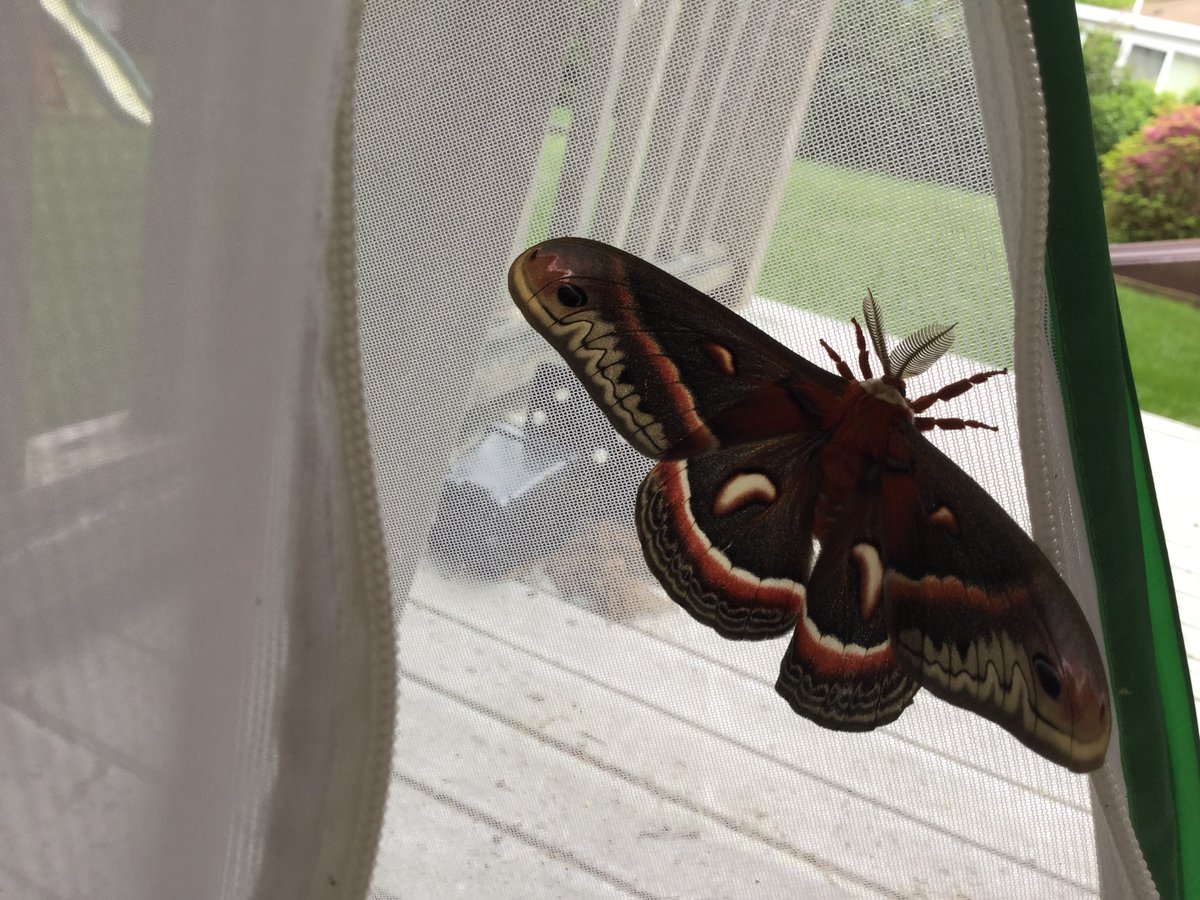I  Moths: A support program for the rare moths of the Southeastern Massachusetts Coastal Pine Barrens.
Moths: A support program for the rare moths of the Southeastern Massachusetts Coastal Pine Barrens.
Several species of Pine Barrens moths have become rare as a result of fire suppression which causes the loss of various stages of pitch pine/scrub oak successional habitat. SEMPBA is hoping to reduce this trend by promoting the use of prescribed fire as one of the management tools in habitat restoration. You can easily support rare moths by planting one or more of the native plants in your yard that rare moths require:
- Pitch pine (Pinus rigida)
- Scrub Oak (Quercus ilicifolia)
- Low bush blueberry (Vaccinium angustifolium)
- Black cherry trees (Prunus serotina)
These native plants will benefit the wondrous H. cecropia as well as other moth species, and they are also highly beneficial wildlife food plants. Contact us to learn more about local suppliers of native plants.
If you'd like to support rare Pine Barrens moths but don't have a yard, consider volunteering with SEMPBA, other conservation organizations, or Friends groups that value pitch pine-scrub oak habitats. You might consider organizing invasive plant removal work parties in your community to help control invasive plants on town conservation lands.
SEMPBA is planning a model native plant garden highlighting the plants most beneficial to rare Pine Barrens moths. Below is the chart that will guide our garden. We hope you will support rare moths by installing these plants in your garden, too.
The I 

Why Moths Matter
- Moths evolved before butterflies, more than approximately 150 million years ago; they are intrinsic to biodiversity but are in decline world wide.
- Moth transformation from egg to caterpillar to chrysalis to a flying creature is a wonder of nature.
- Moths are an important part of the food chain, providing a rich food for bats, birds, frogs, and other insectivores, including humans.
- Chemicals produced by moths have unexplored economic and health-benefits potential.
- Moths are indicators of ecosystem health and human sensibility (will we really allow more species to go extinct?).
The Moth Ball
In recognition of National Moth Week, SEMPBA's annual Moth Ball celebrates the amazing moths of the Southeastern Massachusetts Pine Barrens. Join us for this fun, family-friendly evening on July 27, 2018 at Wildlands Trust.
National Moth Week is July 21-29, 2018. Visit NationalMothWeek.org for more about the national movement to support moths.
Primary Massachusetts Pine Barrens Moth Species
This chart was compiled for SEMPBA by wildlife biologist and former SEMPBA board member Stephanie Schmidt.
| Common Name | Scientific Name | MA Status | Habitat | Larval Food |
| Barrens Daggermoth | Acronicta albarufa | T | open pitch pine w/scrub oak thickets*; large plots of early successional*** | scrub oak* chestnut, oak, possibly beech** |
| Gerhard's Underwing | Catocala herodias gerhardi | SC | open pitch pine w/scrub oak thickets* | scrub oak* |
| Waxed Sallow Moth | Chaetaglaea cerata | SC | pitch pine/scrub oak*; early successional | huckleberry, lowbush blueberry* |
| Melsheimer's Sack Bearer | Cicinnus melsheimeri | T | scrub oak w/in frost pockets*; early successional**** | scrub oak*,** |
| Slender Clearwing Sphinx Moth | Hemaris gracilis | SC | pitch pine/scrub oak barrens* | lowbush blueberry*, **; possibly other laurels** |
| Barrens Buckmoth | Hemileuca maia | SC | open barrens w/ extensive scrub oak thickets* | scrub oak (mainly) *, ** |
| Water-willow Stem Borer | Papaipema sulphurata | T | edges of streams, swamps, wetlands* | water-willow (Decodon verticillatus)* |
| Pink Sallow Moth | Psectraglaea carnosa | SC | ericaceous veg. in pitch pine/oak barrens* | possibly lowbush blueberry* |
| Pine Barrens Speranza | Speranza exonerata | SC | scrub oak sandplain barrens* | scrub oak* |
| Pine Barrens Zale | Zale lunifera | SC | sandplain barrens; scrub oak thickets* | scrub oak*; beach plum, cherry** |
| Pine Barrens Zanclognatha | Zanclognatha martha | T | pitch pine/scrub oak barrens; late successional barrens* | pitch pine* |
| * Information from corresponding NHESP Rare Species document **Wagner. 2005. Caterpillars of Eastern North America. Princeton Univ. Press, NJ. 512 pp. ***US Forest Service, http://www.fs.fed.us/database/feis/animals/arthropod/acal/all.html ****NYNHP, http://www.acris.nynhp.org/report.php?id=7956 |
||||
Thanks to Stephanie Schmidt, wildlife biologist and former SEMPBA board member, SEMPBA has become a nursery for cecropia (Hyalophora cecropia) moths, who will remain in their cocoons until sometime late May or early June. Cecropia are the largest moths in North America, sometimes reaching a wingspan of six inches. You may visit the cecropia in their cocoons, and hopefully, watch them emerge and fly away when we release them into the Pine Barrens. SEMPBA volunteers are planning a Moth Nursery Viewing Station as part of the new Moth Garden at the SEMPBA Community Conservation Center, 204 Long Pond Road in Plymouth.